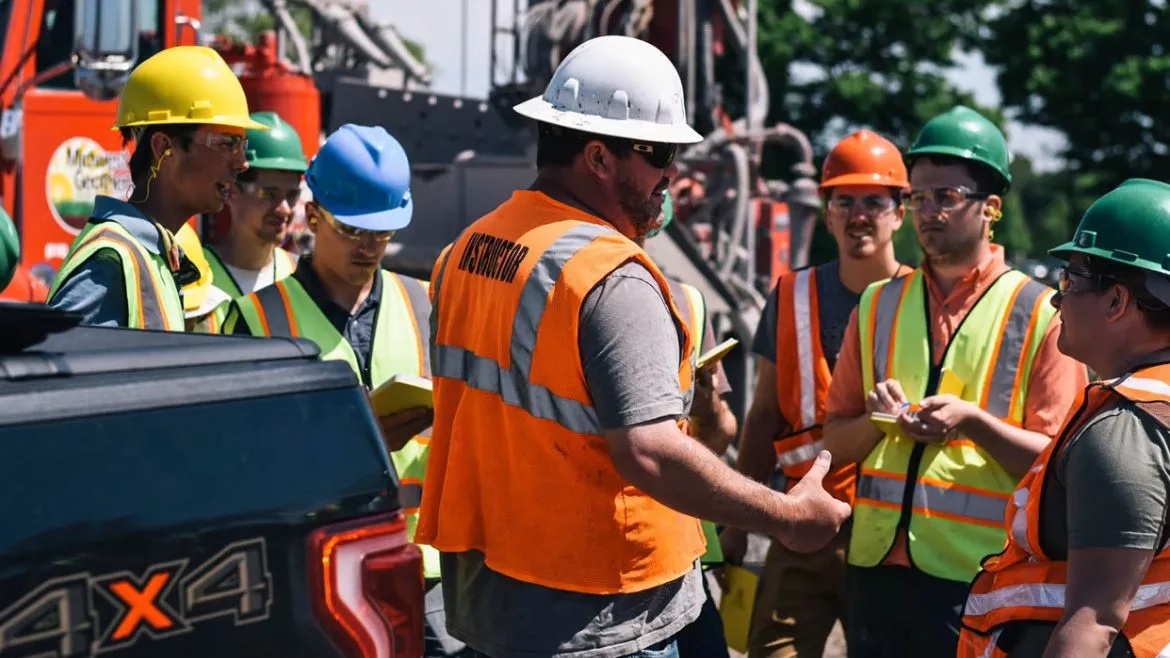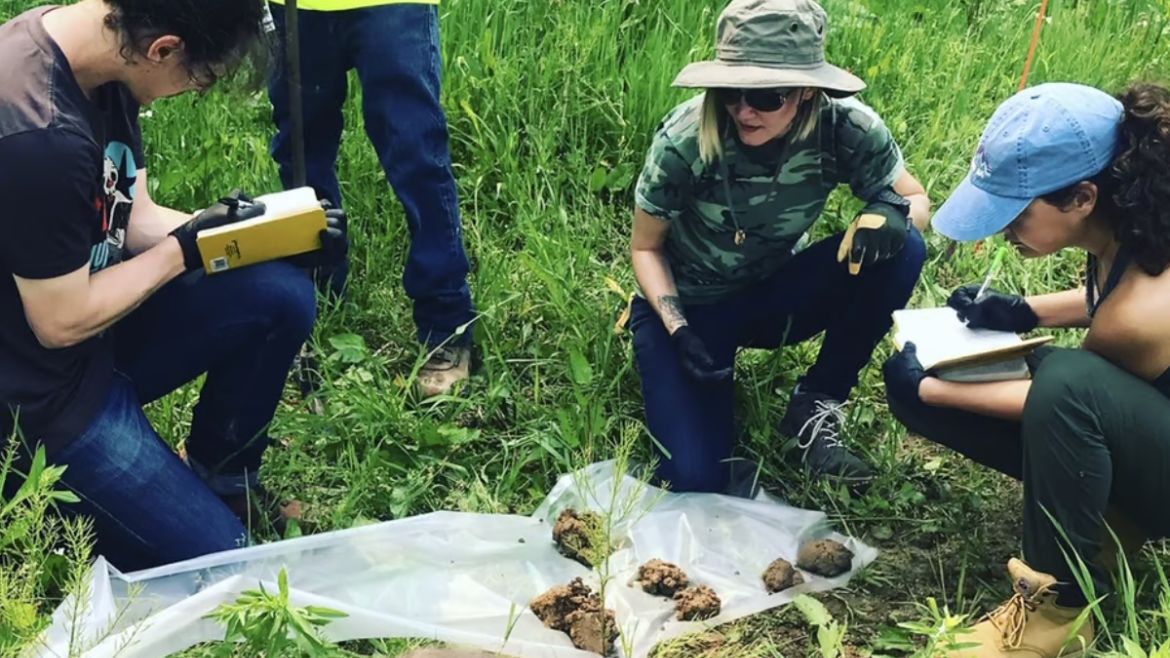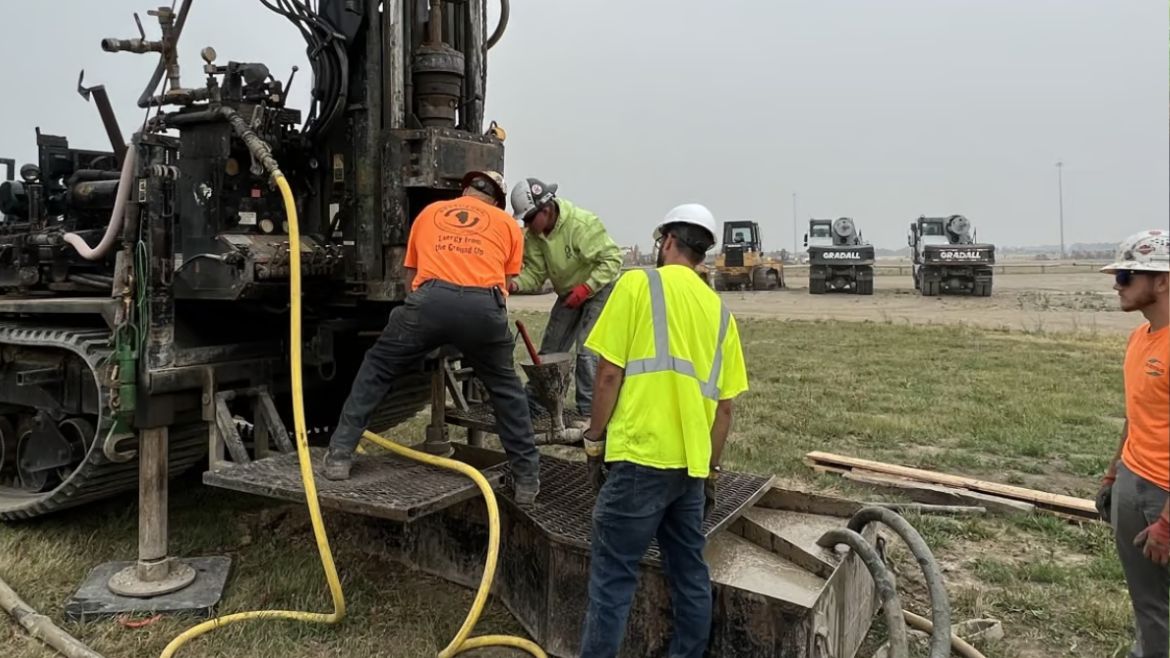Hire Gen Z!
From Minecraft to job sites, this generation is ready to get muddy—if we let them!

In late 2022, I attended a LinkedIn presentation on the shift in individuals wanting to work green jobs. LinkedIn stated that profiles focusing on sustainability and green jobs would surpass oil and gas job profiles by the end of 2023. I believe they are right. The next time you scroll on LinkedIn and see a post advocating for NetZero, click on it and look at when they graduated high school or college. The majority are the youngest of Millennials and Generation Z. The current top green jobs that people under 30 study, prepare for, and desire to be part of are Sustainability Manager, Wind, Solar, Ecologist, and Environmental Safety. But those are different from the jobs we in the ground source geothermal industry must fill. We want geothermal drillers, loop installers, heavy equipment operators, and green job laborers. The top green jobs have college-focused programs with onboarding, blended training, and detailed career paths. Generation Z is witnessing the impacts of carbon emissions on our planet through fires, extreme weather, and droughts. They cannot see that 45% of the construction industry's workforce is over 55 and will be retired by 2030. We as an industry must drill deeper into the construction workforce dynamics and Generations Z expectations to develop the next generation of geothermal professionals.
The Construction Workforce Playing Field
The United States has 166 million individuals working every day. There are 7.9 million employed in the construction industry, which generates over 1.4 trillion dollars in revenue. The construction workforce is less than 5% of the entire US workforce. As we drill deeper into the 7.9 million individuals working in construction, the majority of the workforce is Laborers, Carpenters, Electricians, and Plumbers. Sadly, the laborer role is the lowest-paid role on site, whereas the other three have the highest pay. Yes, organized labor programs establish higher wages, and several progressive states have enacted the “Jobs Acts.” Yet the average pay for most laborers is $21.00 an hour. Alternatively, the average hourly wage in America is $27.00 an hour, which is almost adequate for a living wage for one. Still, it is not a capable wage for sustaining a family. Beyond the wage disparagement, construction operators make up 1.2 million of the 7.9 million active construction workers, with the majority working in mining, followed by heavy equipment and oil/gas. All three have established training programs to develop new hires. This leaves about 1% of the US workforce to work in geothermal drilling and fieldwork.

Where Did All The Workers Go?
The reality is that the entire construction industry needs help recruiting, hiring, and retaining. The rough and tough culture has been blamed on the work ethic of the last two generations. Sadly, that is not the case. Three significant influences have created a labor shortage in the past two decades. First, many great individuals who would have been perfect for the construction and geothermal industry volunteered to counteract Global Terrorism. For twenty years, many great candidates continued to do their part with the military worldwide. The War on Terror also created the largest generation of service-connected disabilities in history, resulting in a shortage of veteran new hires in construction. The subsequent significant influence was the late 2000s housing crisis, which slowed down new home builds and reduced many companies' capabilities to hire and develop a new generation of workers. The first two influences took much work to foresee or identify. However, the third was a trend we could have all seen coming. Twenty-five years ago, the US had an average high school dropout rate of 12%, with many of those people entering the construction trades. However, by 2012, the average was just above 6%, and this trend has continued downward for the past ten years.
The Next Generation: Motivated by Their First 20 Years
This spring, 3.3 million Generation Z high schoolers graduated and entered the workforce. As they enter the adult world, 86% of Generation Z feel pushed to attend college by their family today, and 50% believe that is no longer the required path to success. Did your company hire any of them? Stop! If you were about to say this generation is too soft or doesn’t want to work, you need to reflect on where they came from. Generation Z is primed to go out and get muddy in the field while loving every minute. The same significant influences that impacted our ability to hire young people also helped develop Gen Z. They learned stories and heartbreak from their families who sacrificed so much to make a difference around the world, deterring evil. Generation Z desires that same purpose but wants to make a difference locally that impacts globally. They witnessed the financial hardship of the housing crisis, with many families losing their homes. That experience has driven them to find jobs that provide a career path with family-sustaining benefits and wages. They want to develop skills that create worth and purpose within them. Compounding that purpose with the impact of extreme weather and climate change, working green jobs is the only way to a sustainable future.
 Twelve years ago, instead of saying, “These damn kids are always playing Minecraft,” we should have lobbied Minecraft to create a city planning and geothermal loop field map.
Twelve years ago, instead of saying, “These damn kids are always playing Minecraft,” we should have lobbied Minecraft to create a city planning and geothermal loop field map.Generation Z Wants to be Muddy; They Just Can't Get Their Phones Wet
I believe the greatest misinterpretation about Generation Z is that they don’t want to get muddy. They do; it is just that they have been told not to get their technology wet for their entire life. The difference between Generation Z and X is that our learning paths have been reversed. Like the previous generations, Gen X had to experience the world by going out and doing. We got muddy because it is how we learned. Generation Z experienced the world through a touch screen with the ability to instantly ask questions to learn anything desired. Twelve years ago, instead of saying, “These damn kids are always playing Minecraft,” we should have lobbied Minecraft to create a city planning and geothermal loop field map.
The reason why 50% of Generation Z believes they can go out and learn a trade versus attending college is that they have always had the resource technology-driven knowledge available. As a Gen X’er, I left my father's drill company to attend college because I could get muddy anytime, but I didn’t have access to knowledge through technology. This generation and the next operate where soft and hard skills have been blended because technology and knowledge have blended.
Workforce Development
Workforce development programs and funding initiatives are developing today and are perfect for Generation Z and all who want to participate in the NetZero revolution. These programs can utilize multiple learning platforms encompassing online webinars, classroom theory, and field learning applications. The major overhaul in onboarding, training, and retaining will be blending a new workforce with the veterans in the field—the new workforce with academic task learning and working alongside experienced personnel who learned by doing. Work Force Development will require leadership development programs. Beyond blending multiple generations of experience, the field will need to update field methods, applications, technology, and equipment. These improvements require the latest risk assessment, safety analysis, documentation of best operating procedures, and understanding of process management. The next generation of the workforce will look different, think differently, and complete tasks differently, but they will help us succeed in meeting our NetZero goals. In the next issue of GEO Outlook, I will continue this conversation on specific building blocks to develop Generation Z into drillers.
Looking for a reprint of this article?
From high-res PDFs to custom plaques, order your copy today!








